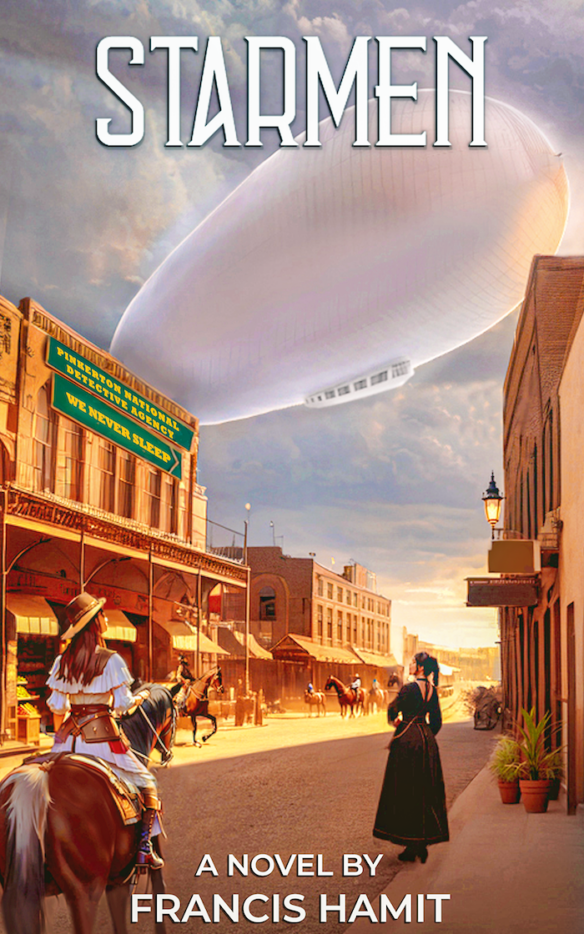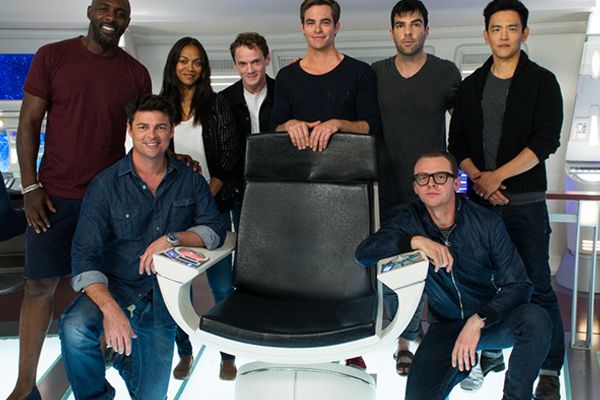(1) TOLKIEN CRITICISM. Some fannish references surprisingly creep into Dennis Wilson Wise’s reviews of The Literary Role of History in the Fiction of J. R. R. Tolkien by Nicholas Birns and Representing Middle-earth: Tolkien, Form, and Ideology by Robert T. Tally Jr. in “Tolkien Criticism Today, Revisited” for the Los Angeles Review of Books. For example:
….Of these debates, Birns often takes the more challenging or counterintuitive side. For instance, most Tolkienists agree that Tolkien based his Rohirrim on the Old English kingdom of Mercia. Instead, Birns sees the Rohirrim as semimodern—not medieval—through their “civilizing” contact with Gondor. To say the least, this view enjoys questionable textual support, but as one goes through Birns’s book, a clear pattern begins to emerge. Over the last few years, the Tolkien community has endured its own shadow version of the Sad Puppies fiasco. In 2021, certain right-leaning fans (and at least one senior scholar) loudly decried the “wokeism” of a diversity-themed seminar hosted by the Tolkien Society, and with even greater toxicity, some people in Tolkien fandom have virulently attacked the multiracial casting in The Rings of Power, an Amazon Prime Video series that first aired in September 2022.
This is the cultural moment into which Birns wades, but for someone hoping to make an important political intervention, he frequently stumbles over several small, self-deprecating asides. One example involves race and representation. Before launching into the argument, Birns explicitly denies that, as a white male from an Anglo-American cultural background, he is “trying to act as an authority on those subjects.” Here, Birns is plainly attempting to acknowledge his positionality, a move often called for by progressive scholars, but his good intentions catch The Role of History in Tolkien in a performative quandary. They let right-wing crusaders dismiss his arguments out of hand; after all, this book wasn’t written by “an expert.”
But of course Birns isn’t really trying to show wayward young fascists the light. His real audience is the academic Left, and despite his principled humility, Birns clearly wants to provide his fellow leftists with scholarly ammunition against the anti-diversity crowd. Thus his various scholarly takes consist mainly in quashing claims of “Germanic primitivism” in Tolkien. Birns downplays not only Rohan’s clear connection to Mercia—the Old English people, remember, were originally Germanic—but also Tolkien’s overall admiration for the Gothic peoples. Additionally, Birns alleges that Tolkien took multicultural Byzantium as his model for Gondor, not imperial (and eventually Ostrogothic) Rome. Even more pointedly, although Birns laments how little Tolkien knew about the “traditions and cultural memory of non-European peoples,” he nevertheless claims to see some African influence on the legendarium. Allegedly, Tar-Míriel of Númenor bears a passing resemblance to Empress Zewditu of Ethiopia.
Even for readers who cheer his goals, these connections can seem far-fetched….
(2) CAN’T GET NO SATISFACTION. “6 sci-fi and fantasy authors who hated the screen adaptations of their books” at Winter Is Coming.
Earlier this week, A Song of Ice and Fire author George R.R. Martin set off a drama bomb when he bluntly criticized HBO’s Game of Thrones prequel House of the Dragon in a blog post….
But compared to some of the other authors who have criticized adaptations of their work, it was nothing. Below, let’s look at some authors who were unhappy with the screen versions of their books, and what they said and did about it…
The article leads off with Ursula K. Le Guin (Earthsea), and follows with Alan Moore (Watchmen), Stephen King (The Shining), P.J. Travers (Mary Poppins), Brandon Sanderson (The Wheel of Time) and Michael Ende (The Neverending Story).
Ursula K. Le Guin didn’t like the Sci-Fi Channel’s adaptation of Earthsea
Let’s begin our journey into dissatisfaction with Ursula K. Le Guin, the author of the beloved Earthsea books. Where high fantasy epics often involve war or other mass-scale conflict, the Earthsea novels are quieter and more complicated, with different books following different characters living on a string of islands where magic is practiced freely. When The Sci-Fi Channel announced that it was going to make an Earthsea miniseries based on the first book in the series, A Wizard of Earthsea, people were excited.
But that excitement evaporated when they saw the finished product, which ran back in 2004. Le Guin herself was already bracing for the worst. “When I saw the script, I realized that what the writer had done was kill the books, cut them up, take out an eye here, a leg there, and stick these bits into a totally different story, stitching it all together with catgut and hokum,” she wrote for Locusmagazine. “They were going to use the name Earthsea, and some of the scenes from the books, in a generic McMagic movie with a silly plot based on sex and violence.”
“I want to say that I am very sorry for the actors. They all tried really hard. I’m not sorry for myself, or for my books. We’re doing fine, thanks. But I am sorry for people who tuned in to the show thinking they were going to see something by me, or about Earthsea. I will try to be more careful in future, and not let either myself or my readers be fooled.”
While Le Guin had kind words for the actors, she had a major problem with the casting. In the Archipelago of Earthsea, almost all of the characters are people of color, including the wizard Ged, the closest thing the series has to a main character. But in the Sci-Fi show, pretty much everyone was white, something Le Guin did not appreciate. “In the miniseries, Danny Glover is the only man of color among the main characters (although there are a few others among the spear-carriers),” she wrote for Slate. “A far cry from the Earthsea I envisioned.”
“My color scheme was conscious and deliberate from the start. I didn’t see why everybody in science fiction had to be a honky named Bob or Joe or Bill. I didn’t see why everybody in heroic fantasy had to be white (and why all the leading women had “violet eyes”). It didn’t even make sense. Whites are a minority on Earth now—why wouldn’t they still be either a minority, or just swallowed up in the larger colored gene pool, in the future?”
Le Guin was a bit kinder about the 2006 animated movie Tales from Earthsea, although she was still disappointed it didn’t channel her books more. “It is not my book. It is your movie. It is a good movie,” she remembers telling director Goro Miyazaki. At least she didn’t hate it this time.
(3) GERWIG HONORED. Deadline is there as Barbie director “Greta Gerwig Accepts Motion Picture Pioneer Of The Year Award”.
Greta Gerwig was beaming Wednesday night as she was honored as this year’s Pioneer Of The Year, and in the process also helped raised $1.4 million for the Will Rogers Motion Picture Pioneers Foundation at a sold-out dinner that packed the Beverly Hilton Hotel International Ballroom…
(4) EATING THE FANTASTIC. Scott Edelman invites listeners to chow down on cheesy garlic bread with Jeffrey Ford in Episode 237 of the Eating the Fantastic podcast.
I last chatted with Jeffrey Ford — last for your ears, that is — eight years ago during the 2016 Readercon — in a conversation which appeared on Episode 17. Back then, I described him as a six-time World Fantasy Award-winning and three-time Shirley Jackson Award-winning writer whose new short story collection A Natural History of Hell had just been published. But now that it’s 2024 and we’re back for yet another Readercon, he’s an eight-time World Fantasy Award-winning writer and a four-time Shirley Jackson Award winner.

Since that previous meal, he’s also published the novel Ahab’s Return: or, The Last Voyage in 2018, A Primer to Jeffrey Ford in 2019, The Best of Jeffrey Ford in 2020, and Big Dark Hole in 2021, plus three dozen stories or so new stories.
We discussed why writing has gotten more daunting (but more fun) as he’s gotten older, the difficulties of teaching writing remotely during a pandemic, how he often doesn’t realize what he was really writing about in a story until years after it was written, the realization that made him write a sequel to Moby-Dick, why if you have confidence and courage you can do anything, the music he suggests you listen to while writing, the reason he thinks world building is a “stupid term,” the advice given to him by his mentor John Gardner, how the writing of Isaac Bashevis Singer taught him not to blink, why he prefers giving readings to doing panels, the writer who advised him if everybody liked his stories it meant he was doing something wrong, and much more.
(5) OCTOTHORPE. In episode 119 of the Octothorpe podcast, “Only One of Them Is My Bludgeoning Hand, John” –
We respond to your burning questions in our bumper mailbag episode! We spend a good long time going through your posts, and we briefly discuss the recent allegations against Neil Gaiman before moving onto happier topics. Listen here.
There’s a transcript at the link.

(6) BRITISH ROBOT PURCHASES BOOM. [Item by SF Concatenation’s Jonathan Cowie.] Robot sales in Britain broke its own record in 2023 with 3,830 industrial robots sold according to the International Federation of Robotics. This represented a 51% increase over 2022.
However, Britain still lags behind France, Italy and the European leader Germany. In 2022 Germany installed 269,427 industrial robots.
I keep on warning folk that the machines are taking over, but no-one ever listens….

You can read about it here: “IFR press release World Robotics 2024”.
(7) UNSTUCK THE LANDING. Space-Biff! surprises us by revealing Kurt Vonnegut’s work creating board games in “So It Goes”. And one was finally published this year — Kurt Vonnegut’s GHQ: The Lost Board Game. (It seems to be available at Barnes & Noble®.)
Before he became a famous author, over a decade before Slaughterhouse-Five, Kurt Vonnegut was a board game designer. A failed board game designer, with only a sheaf of notes, a single rejection note, and an unfinished patent to his name, but a board game designer nonetheless.
And now his sole surviving design is an actual board game you can buy and play and, if you’re anything like me, spend a few hours marveling at. Thanks to the efforts of the Vonnegut estate in preserving his notes and Geoff Engelstein in interpreting and tweaking them into a functional state, GHQ — short for “General Headquarters” — is, not unlike Billy Pilgrim, a thing unstuck in time, transported from 1956 to 2024….
… Is GHQ a good game? Sure. For its time. For its place. Had it appeared in 1956, it may well have become the third great checkerboard game. With its zones of control and special units, it might have helped shape the coming century’s approach to tabletop gaming….


(8) MEMORY LANE.
[Written by Lis Carey.]
September 26, 1957 – Tanya Huff, 67.
By Lis Carey: Tanya Huff is a Canadian science fiction and fantasy writer, who made her first sale of two poems to The Picton Gazette for $10, at age ten.
Since then, she has given us several fantasy series, including the Keeper’s Chronicles, in which Claire Hansen, a Keeper, has unintentionally become responsible for a small hotel, and the not completely sealed hole to hell in its basement. She’s assisted, with some degree of befuddlement initially, by Dean, the young handyman and cook she found working there; Jacques, the ghost of a French-Canadian sailor who has haunted the hotel since he died there in the 1920s; and her not befuddled at all cat, Austin, who talks, and is the source of a great deal of often snarky advice. I’m currently enjoying the first volume, Summon the Keeper.

Other fantasy series include the Blood series, featuring a former police detective and a vampire, which was adapted for television as Blood Ties, and the Quarters series, with bards who travel the kingdom carrying both news and magical skills, and are faced with new challenges when the kingdom is invaded.
Tanya Huff has also given us the Valor Confederation series, a military sf series where Staff Sergeant Torin Kerr tries to keep both her superiors and her company of space marines alive while on lethal missions across the galaxy. I hear excellent things about it, but haven’t read any of it yet.
An interesting tidbit is that while studying at Ryerson Polytechnical Institute in Toronto for her Bachelor of Applied Arts degree, she was in the same class as science fiction writer Robert J. Sawyer. They collaborated on their final TV Studio Lab assignment, a short science fiction show.
(9) COMICS SECTION.
- Thatababy features a crossover.
- The Argyle Sweater depicts that unknown first attempt at Troy.
(10) WEST COAST AVENGERS INTRODUCES BLUE BOLT. This November, the Earth’s Mightiest Heroes are back on the best coast in an all-new run of West Coast Avengers from writer Gerry Duggan and artist Danny Kim. Led by Iron Man, the new roster includes Spider-Woman, War Machine, Firestar, a mysteriously redeemed Ultron, and another former villain seeking redemption— Blue Bolt!
An experienced Marvel henchman with unrefined lightning-based abilities, Chad Braxton, AKA Blue Bolt, makes his first appearance in WEST COAST AVENGERS #1 where he finds himself on loan to the Avengers through a new prison release program. Reckless, undisciplined, and downright rude, Blue Bolt may just be the biggest jerk in the entire Marvel Universe. Can the Avengers whip him into shape or will Blue Bolt’s abrasive attitude–and lack of morals–tarnish the team’s legacy forever? See him for yourself in Kim’s original design sheet for the character plus a promotional image by Todd Nauck.
On the unique role Blue Bolt will serve on the team, Duggan said, “The Avengers have seen a lot of rough customers over the years. Hell, even Deadpool and Wolverine have been Avengers at different points. But the Avengers haven’t seen a bigger @$!&^% than Blue Bolt. He’s mean, he’s self-centered, narcissistic, and he’s only on the Avengers West Coast squad to shave time off his sentence. And wait until you find out what he’s in jail for. Yeesh.”

(11) SFF ON LEARNEDLEAGUE: WILLIAM GIBSON. [Item by David Goldfarb.] Yesterday’s match day featured this question:
What is the portmanteau title of William Gibson’s seminal and influential 1984 cyberpunk novel, the first (and only) to win the Nebula, Hugo, and Philip K. Dick awards?
This had a 37% get rate league-wide, with no single wrong answer getting as much as 5% of the submissions.
(12) MY PULITZER PRIZE FOR FICTION NOMINATION. [Item by Francis Hamit.] My novel Starmen has been nominated for the Pulitzer Prize for Fiction. The nomination has been accepted by Columbia University. It awards the Pulitzers. Which is good but there is more to do.
Leigh Strother-Vien is also nominated for her great work editing the book. It’s a very long book: 620 pages in the print editions. Four years of work at a time when we were both disabled and sick a lot of the time. Just shows you what you can do when you try. But we are up against very big publishers with big marketing and publicity machines. There is a long list of distinguished and very busy jurors from Publishing and Academia who may not like the fact that we are, alas, self published.
We never thought of doing it any other way. Why? I’ll be 80 next week and Leigh is 70. We are disabled. And we are soldiers. There is a lot of prejudice between us and a traditional publisher. We don’t have an agent and the “over the transom” method was closed years ago. There is a generation of younger editors that are more concerned about politics than the quality of the writing. Publishing executives tend to chase the market and imitate what has been successful rather than take risks on “new” or “unknown” writers. Ageism and Ableism are just two of the many hoops our book would have to jump through to get a deal. We don’t have time for all of that. We are too sick and tired, both of us, to deal with it.
So we applied, got accepted, and we’re a bit of a charity case because of the Kickstarter appeal to raise funds for formatting the interior and the excellent cover donated by Markee Book Covers. I took a credit union loan to cover other expenses. We have been graced with almost entirely five star reviews and the endorsements of friends such as Jacqueline Lichtenburg and Glen Olsen. So far, so good. But now this is a battle for public attention, for sales, and for ratings and reviews on Amazon, Goodreads and other websites.
This novel is an experiment in genres. We use a lot of them packed into what is on the surface an adventure novel with more than a dozen principal characters, each fully formed. Thematically it moves from Historical/ Western/ Detective fiction to Espionage, Political Intrigue, and Apache Myths, that becomes surrealist Fantasy and Science Fiction, mixed with Romance, Witchcraft, Feminism, Quantum Mechanics, String Theory, and disquisitions on slavery in the Old South, the failure of Reconstruction, and the floating world of sex workers called the Demimonde. All are grist for the mill. A lot of research was needed. A lot of deep thinking since I had no outline. That would have been more of a hindrance than a help.
Instead I just start at the beginning with an accidental meeting of two Scots far from home, in a dusty border town called El Paso, and the appearance overhead of a large balloon carrying a traveling circus. One of the Scots is the local manager for the Pinkerton National Detective Agency (a forerunner of today’s FBI) and the other is a young anthropologist from Cambridge University, George James Frazer. You just know interesting things will happen.
So much for the tease. Buy the book for the rest.
There is another reason that I feel confident. I’m a very good writer. I’m also a graduate of the Iowa Writers Workshop, the oldest and most prestigious graduate writing program in the world. Rather amazing for a kid who got Ds in high school English. I could not spell or punctuate worth a damn. Still can’t. I’m dyslexic, a condition unknown and unnamed in the 1960s. I began my career as a Drama major, and when I came to Iowa the first time, I had never heard of the Workshop. I soon met professors there and graduate assistants, some of whom were or would become famous. But it was a mandatory drama theory course, “Playwrighting”, that changed my life. I began writing fiction and was admitted to the Undergraduate Writers Workshop. Then I spent four years in the US Army, where I also learned journalism and began my professional career. Returning to Iowa I was in classes with writers who became very famous and also won Pulitzer Prizes. Jane Smiley, Tracy Kidder, and last year’s winner, Jayne Philips were among them. But it’s not the Iowa MFA that helps, but the Iowa workshop program, a trial by fire if there ever was one for literature. Iowa rigs the game. You don’t get in unless you are already at the top. Over 97% of all applicants fail. When you have done that getting your book published should be easy — and is, when you are young and have an agent and a publisher that can see decades of other books coming. At my age, not so much, and I have had agents tell me that to my face and others drop me because I wouldn’t imitate other writers that were best sellers.
Self-publishing is a long and honorable tradition in American letters. Willa Cather and Walt Whitman started that way. So once more I’m in good company. I am going to have to push myself and my book to prevail, but there is no long list or short list for the Pulitzers. Only winners and finalists. If it were not for so many top reviews we would not have entered, but now that we are here we can only try our best.

(13) VIDEO OF THE DAY. [Item by Mike Kennedy.] “Trap Pitch Meeting”. Huh. Sounds pretty much like the review I read. Then again, with a plot this shallow/unbelievable and nepotism this blatant, it might be hard for a parody and a review to differ very much.
[Thanks to Teddy Harvia, Mike Kennedy, Andrew Porter, David Goldfarb, Francis Hamit, John King Tarpinian, Chris Barkley, Cat Eldridge, SF Concatenation’s Jonathan Cowie, Steven French, and Kathy Sullivan for some of these stories. Title credit belongs to File 770 contributing editor of the day Ellen Montgomery.]





